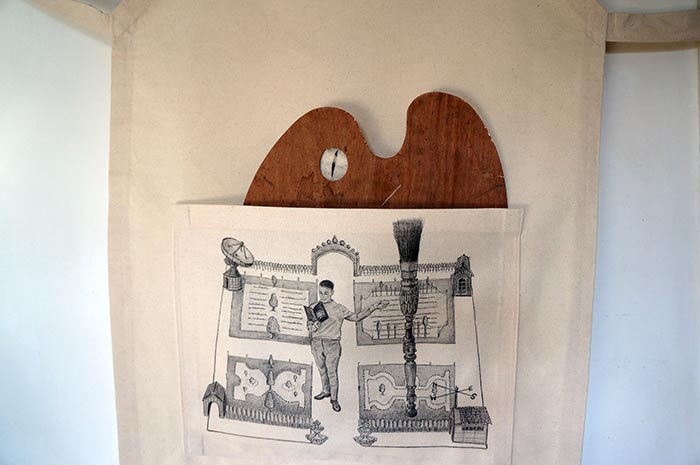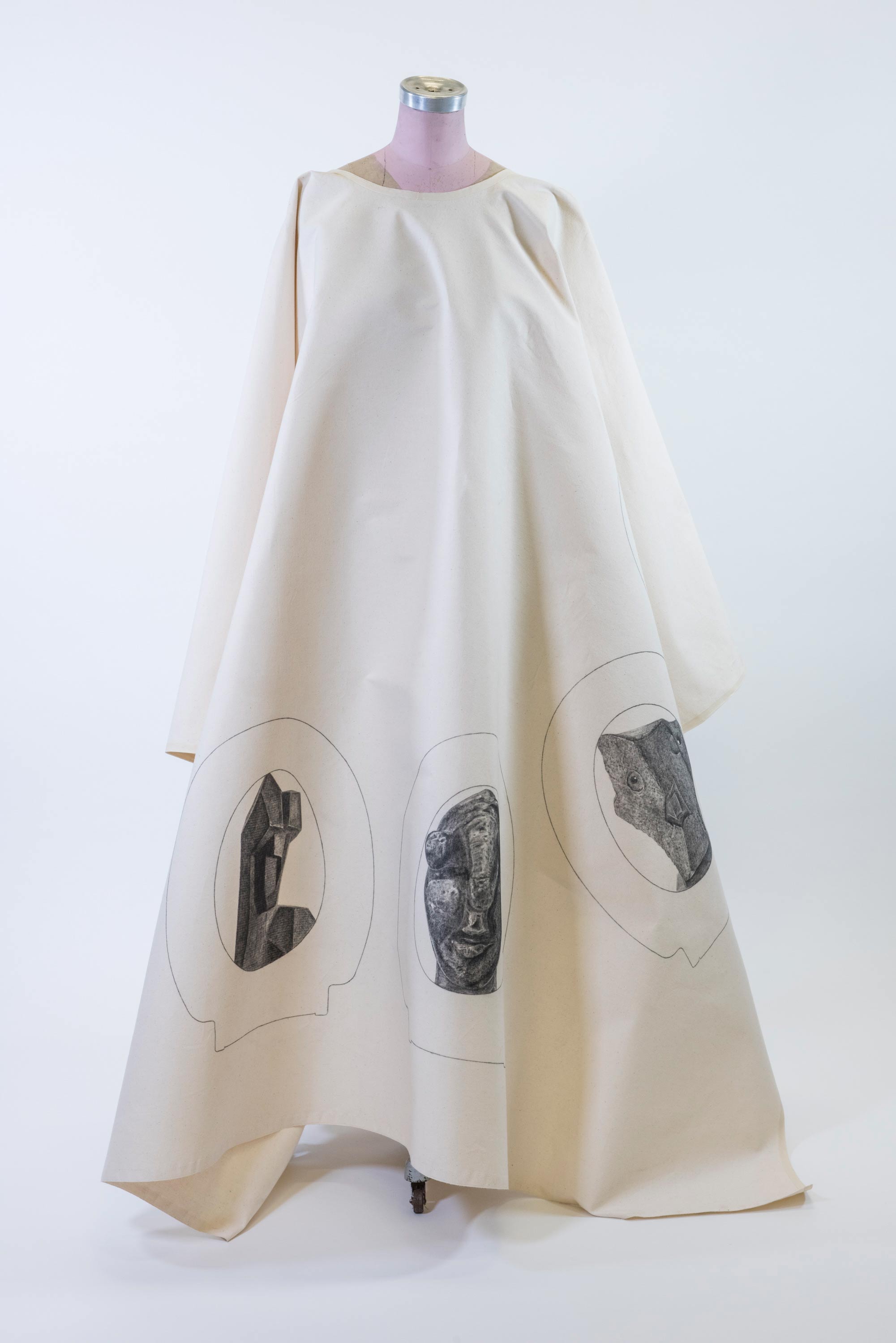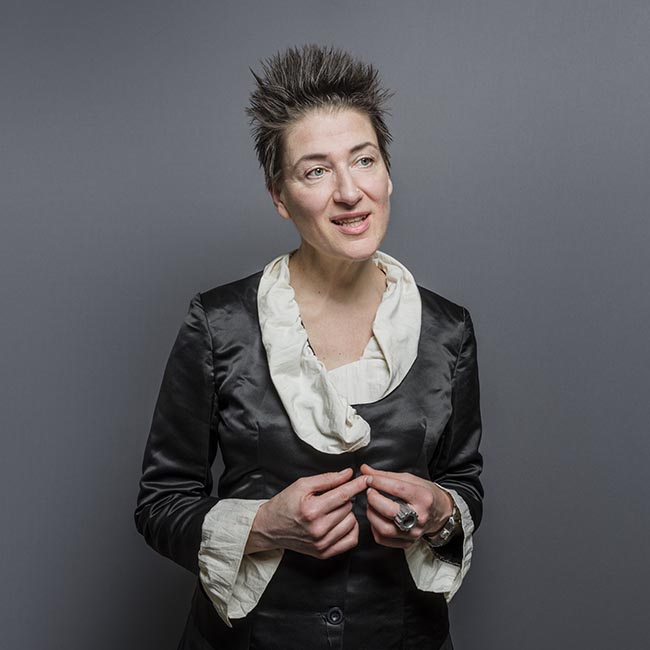‘Artist Substance’ is a quasi-philosophical term Reeve devised to denote a speculative model of art’s ontological operation as a reciprocal relationship between ‘Art’ brought into physical existence and an existential capacity within a human creature that simultaneously becomes activated (‘ontologically carved’) through the non-verbal creation process. Importantly, Artist Substance, although abstract, affects the potential of being and hence the creative and philosophical possibilities of art. Reeve was not interested in justifying the term through argument but excited by exploring the notion through visual means and the figure of ‘the artist.’
The first series of works Diagrams in Honour of Artist Substance (exhibited at Kunsthuis SYB, Netherlands, 2017 and the ARCADE Gallery London, 2018) invested artistic labour into the materials of the back-stage production of painting (raw canvas, the apron, paint brushes, philosophy books). This research was developed during a residency at the Centre for Philosophy & Visual Arts, Kings College London, where Reeve studied Immanuel Kant’s moral philosophy under Dr John Callanan. Some Diagrams’ became performative; Kant Paint, Won’t Paint! explored the influence of the poet Milton on Kant’s philosophical idea of a good will, insisting on the value of an entanglement of artistic and philosophical forces not usually given credit in mainstream accounts.
The term was further explored in a performance-lecture-installation Homage to Robert Smithson – Plasticity and the ontological form of Artist Substance (presented at the Annual Conference of the Association of Art History, 2018) where Reeve literally exposed ‘Smithson the sculptor sculpted!’ as the artist’s major contribution to art history. The piece again used raw canvas and artistic tools but this time drew succour from philosopher Catherine Malabou’s work about the brain’s plasticity and Smithson’s own concern that an artist’s ‘mindings’ should be given as much cultural value and air space as the art objects they produce.





